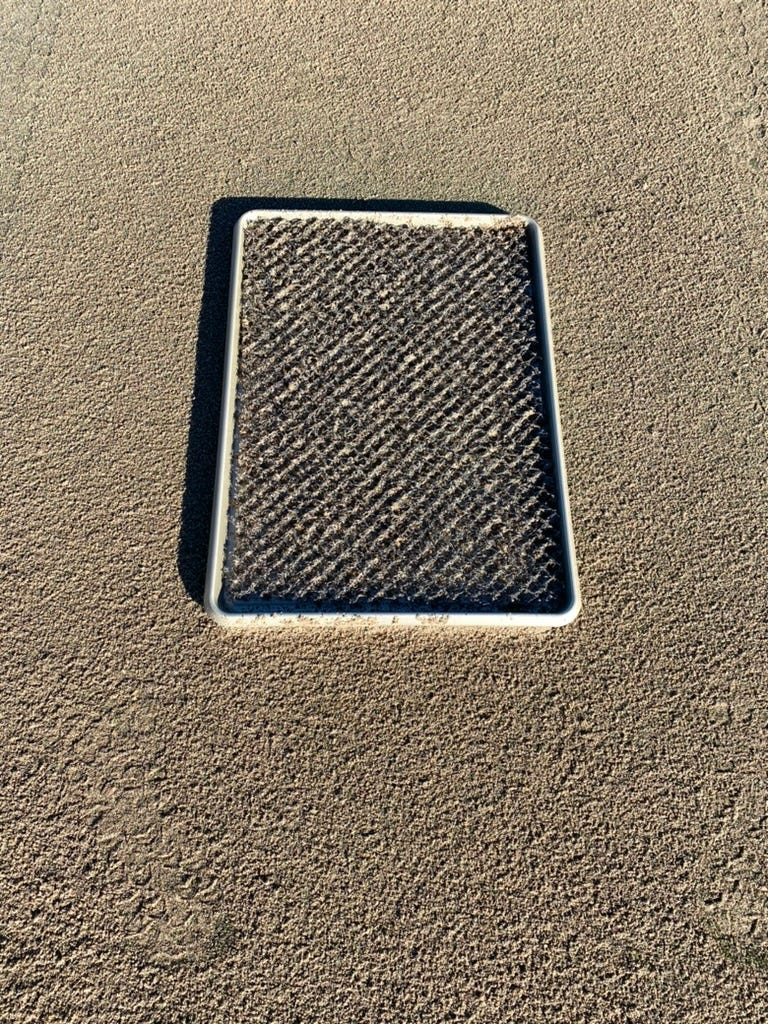You should know how much sand you’re applying to your surfaces. Most probably know how many greens per hopper, or something like an estimated tons per 1000 sq ft. I was convinced, as usual by Micah Woods, to measure our topdressing by depth, specifically millimeters, and it’s super easy.
What you’ll need:
Some kind of catch pan. A rimmed baking sheet is nice; I got mine at Target.
A piece of Enkamat to line the bottom of the pan. This keeps the sand from bouncing out, but also allows for easy cleaning. This might be the toughest thing to find. Maybe a piece of carpet would work as well? If you can get your hands on a scrap of Enkamat, it’s the best solution.
A food scale–again, Target for the win.
A calculator.
The procedure:
Weigh and record the mass of the pan and liner before you catch the sand. To convert to millimeters, you’ll want this in the items in grams. I’m going to show you how to do it in metric units. If you want to use imperial units, you’re on your own.
I lay the mat down in the path of the topdresser.
I weigh the sand-filled pan.
Subtract the weight of the pan and liner pre-sand from post-sand to find the grams of sand captured.
Divide the weight of the sand by 1.63, which is the bulk density of sand–1.63g per cm3.
Now you know the number of cubic centimeters of sand captured in your pan.
Measure the area of your pan–do this in centimeters as well–to find the area you're capturing your sand. (My pan is 2000cm2)
Here’s an example of the math from yesterday’s topdressing. We were aiming to apply 1mm of sand.
Weight of the pan with sand captured=1730g
Weight of the pan without sand=1410g
Weight of sand=320g
320/1.63=196.3 (cm3 of sand captured)
196.3/2000=0.098 (2000 cm2 is the area of the pan, 0.098 equals the number of cm3/cm2)
0.098 x 10=0.98mm
I’ve found this method to be incredibly accurate. I’ll lay the pan down on multiple passes and get within 20 or so grams each time. I will also lay the pan in the middle of the pass and on the outside of the pass, to make sure the topdresser is throwing equally across the path.




Great post as always Chris. I’ll add that for us, I’m generally working with various levels of moisture in my sand as the pile does not have a cover. After collecting sand in the tray I throw it in my office overnight, shake all the now dry sand off the enkamat in the morning and weigh the dry sand. This process ensures that we are just measuring sand each time and no extra water.